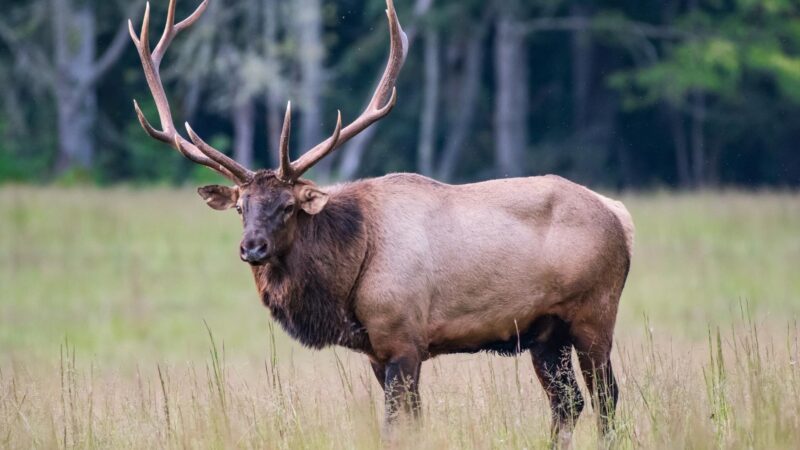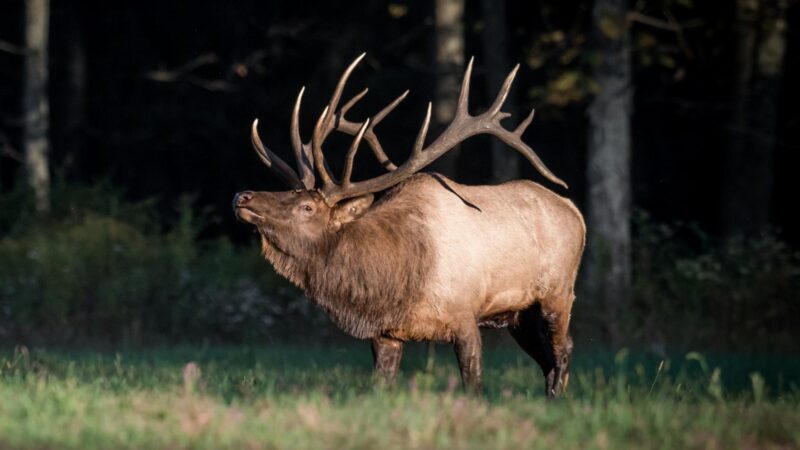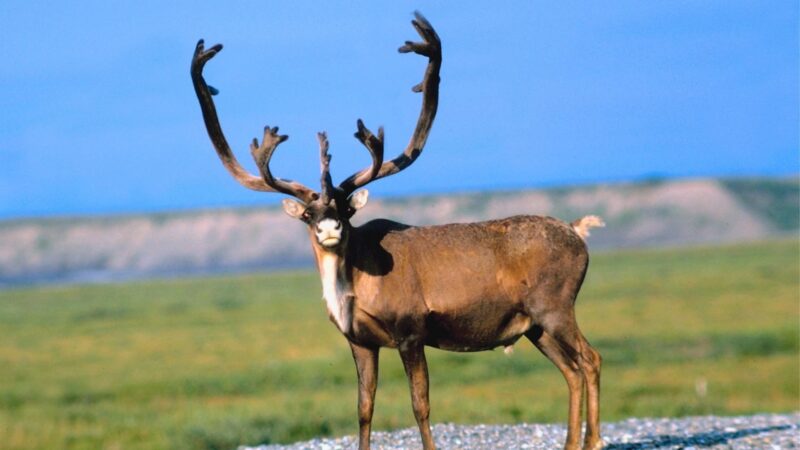Deer or cervid is originally from The Americas, northwestern Africa, Europe, and Asia. You can find this animal in different habitats, such as tropical rainforests, grasslands, wetlands, deciduous forests, and arid scrublands.
This animal doesn’t need to be introduced to North America, just like what happened to Australia as it’s a native species.
What are the types of deer in North America? The types of deer in North America are Elk, Brocket deer, Moose, Caribou, Mule deer, and Whitetail deer. As these species are mentioned, you can expect a lot of physical diversity.
Many of these species like forest grassland, but they can be found dwelling in different urban and suburban settings too. So, there’s a chance for you to see a deer. To be able to identify them, learn more about every species.
Table of Contents
How Many Species of Deer Are in North America?

There are 6 species of deer and 58 subspecies in North America.
What Is the Most Common Deer in North America?
Whitetail deer are the most common deer in North America. Its habitation starts from the mountains of Canada and Central America up to the Keys of Florida.
Elk

Elk are also called red deer. It’s a social species as it establishes a summer herd that consists of up to 400 members. Elks are closely related to white-tailed deer as they both dwell in the same habitat and environment
- Scientific Name: Cervus elaphus
- Appearance: Elks are dark brown in winter, and their color changes into tan when summer comes. The head, legs, belly, and neck have a darker shade than the sides and back parts.
They have a shaggy mane that drops from the neck to the chest. An elk has a thick body, but with slender legs and a short tail. Their long heads have huge ears and widely branching antlers of males.
- Color: Dark brown, tan
- Lifespan: 20 to 26 years
- Habitat: Dense, unbroken forests, open woodlands, clear cuts, coniferous swamps, coniferous-hardwood forests, aspen-hardwood forests
- Height: 0.75 to 1.5 m
- Weight: 67 to 497 kg
- Diet: Roots and tubers, bark, stems, or wood, leaves, fungus, lichens, bryophytes
- Place of Origin: Holarctic region
- Characteristics: Social; motile; migratory; social; territorial; matriarchal; crepuscular
Brocket Deer

Brocket deer coexist in pairs. Compared to other species like white-tailed, its size is just one-third. Due to their complex stomach, they use symbiotic bacteria to digest even coarse vegetation thoroughly.
This is similar to what cows do. While resting, they would regurgitate food and chew it again to obtain the optimum nutritional value.
- Scientific Name: Mazama
- Appearance: The head and neck of this deer have light grayish-brown color. The throat, ears’ inner part, inner thighs, and tail are white. Brocket deer have white spots when they’re young. Moreover, the other parts of the body are reddish-brown or chestnut red. This species has a small body and straight antlers in males.
- Color: Light grayish-brown, chestnut red, reddish-brown, white
- Lifespan: 12 to 16 years
- Habitat: Dense tropical forests, Near swamps, streams, and marshes with thick vegetation
- Height: 1.03 to 1.46 m
- Weight: 30 to 55 kg
- Diet: Leaves, wood, stems, or bark, tubers, and roots, nuts, grains, seeds, flowers, fruits
- Place of Origin: Neotropical regions
- Characteristics: Solitary; motile; nocturnal; diurnal
Moose

This is the largest deer species and one of the largest mammals on the planet. Furthermore, it has the largest antlers that can be found among mammals. These antlers shed and regrow every year.
Moose just stay in cold regions due to their inability to sweat. Despite having poor vision, it has an excellent sense of smelling and hearing.
- Scientific Name: Alces americanus
- Appearance: A moose has very long legs and loose skin hanging on its throat. Also, it has a long head, nose, and upper lip that are flexible.
- Color: Brown, black
- Lifespan: 8 to 12 years or up to 22 years
- Habitat: Forested areas
- Height: Up to 2.3 m
- Weight: 270 to 600 kg
- Diet: Barks, wood, or stems, leaves, tubers, and leaves
- Place of Origin: Nearctic region
- Characteristics: Crepuscular; diurnal; sedentary; solitary; motile; migratory; good swimmer; swift runner
Caribou

Caribou can travel thousands of kilometers in a year as it engages in extensive migration during spring and fall. In summer, they gather in large groups to counter harassment from mosquitoes and flies.
The number of caribou per group dwindles when the weather begins to cool down.
- Scientific Name: Rangifer tarandus
- Appearance: Although the appearance of caribou varies based on sex, region, subspecies, and season, both males and females grow antlers. Since this species tread on soft snow and tundra, it has large and concave hooves. These hooves are also useful for swimming.
- Color: Dark brown, white
- Lifespan: 10 to 15 years
- Habitat: Arctic tundra, subarctic forests
- Height: 0.85 to 1.5 m
- Weight: 55 to 318 kg
- Diet: Leaves, lichens, wood, barks, or stems, roots and tubers, bryophytes
- Place of Origin: Nearctic and Palearctic regions
- Characteristics: Migratory; motile; social; diurnal
Mule Deer

A mule deer is notably adaptable to various habitats. Nevertheless, it chooses to stay in the same territory for winter and summer for years. But it can move farther for up to 8 kilometers, and when it moves to a higher elevation.
It’s considered a small ruminant, and it can’t easily digest food with a lot of fibers. So, it has to survive with the availability of food that’s right for its stomach.
- Scientific Name: Odocoileus hemionus
- Appearance: The permanent markings of the mule deer vary from one to another. Some have a dorsal line that is seen from their back up to the top of their tail. Their tails have commonly black thick hairs but it’s sometimes thin with white hairs.
- Color: Dark brown-gray, reddish, dark or light ash gray, white
- Lifespan: Up to 22 years
- Habitat: Areas with vegetation, woodlands, deserts, shrub lands, boreal forests
- Height: 1.4 to 2.1 m
- Weight: 43 to 150 kg
- Diet: Woody twigs, herbaceous forage, legume seeds, acorns, fleshy fruits like berries and drupes
- Place of Origin: Nearctic region
- Characteristics: Social; motile
Whitetail Deer
This is the shyest and most nervous deer species that are usually in various terrestrial habitats. It has great eyesight but acute hearing. Moreover, it uses its sense of smell to detect danger though. These deer have scent glands between their hoofs. They use these glands to communicate with each other.
- Scientific Name: Odocoileus virginianus
- Appearance: A whitetail deer is redder in summer and grayer in winter. It has white fur on some body parts like circles around the eyes, over the chin and throat, a band on the nose, and inside the ears. Males shed their antlers from January to March then regrow in April or May.
- Color: Gray, red
- Lifespan: 10 to 16 years or up to 23 years
- Habitat: Various terrestrial habitats, brushy areas, farmlands
- Height: .53 to 1.2 m
- Weight: 57 to 137 kg
- Diet: Twigs, tough shrubs, desert plants
- Place of Origin: Nearctic and Neotropical regions
- Characteristics: Sedentary; social; crepuscular; dominance hierarchies; not very vocal
Do Deer Have Any Natural Predators in North America? If So, What Are They?
Deer in North America have natural predators such as gray wolves, coyotes, mountain lions, bears, and jaguars. Humans are also a predator of deer as they find venison lean and tasty when cooked.
What Do Deer Do When Encountering a Deer of a Different Species?
Deer are not aggressive animals so they have a flight behavior when encountering different species, especially their predators. But it can change when they need to protect their fawns.
The pattern of flight behavior varies from species to species. For instance, the mule deer ‘stot’ or does a quick skip with all the legs that get in contact with the ground.
This method allows for overcoming different types of terrain. They can remain agile even on uneven and rocky ground.
As for whitetail deer, it sprints away, but these species work ahead of time when meeting a predator. It will do a move beforehand to outrun the other animal.
Which Are the Most Beautiful Species of Deer?
The most beautiful deer species is the red deer stag due to its elegant form and branching antlers. As a representation of the stag’s age, the antlers are renewed each year to maintain their strength and grandeur.
These antlers are the main reason that a stag becomes the finest creature. Apart from the appearance, a stag is attractive because of the lightness of its motion.
Frequently Asked Questions
Are Deer Considered Dangerous?
Deer are not primarily dangerous as they tend to take flight when they see other animals and humans.
What Deer is the Most Aggressive?
There are no deer species that displayed the most aggression. All of them become aggressive when they have fawns to protect. There are rare cases of deer attacking humans.
One of them was a man who died from puncture wounds that the deer gave him. He received the blow when he checked on the deer that he shot. He thought it was dead, but he was wrong.
Summary
Since deer are native to North America, it’s no wonder that the various species inhabit the continent. They are in different sizes and habitats. But they’re all under the family Cervidae.
They’re non-aggressive as they’re prey species to other four-legged animals. The antlers that are mostly found on male deer are what make them aesthetically pleasing.
List of Sources
Dewey, T. (2003). Odocoileus virginianus. Animal Diversity Web.
On Deer Aggression. (2018). City of Bloomington.
Senseman, R. L. (2002). Cervus elaphus. Animal Diversity Web.
White-tailed deer (Odocoileus virginianus). (2020). National Park Service – U.S. Department of the Interior.
Dewey, T., Bartalucci, A., Weinstein, B. (2000). Alces americanus. Animal Diversity Web.